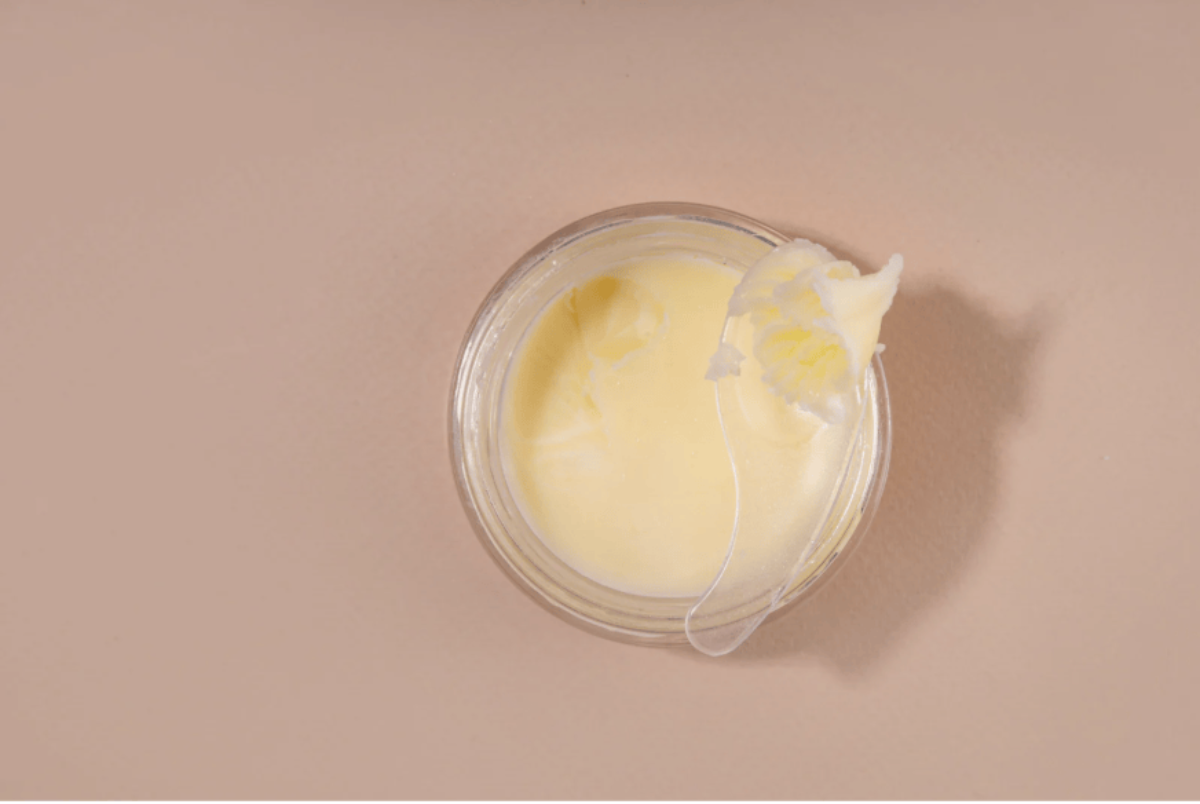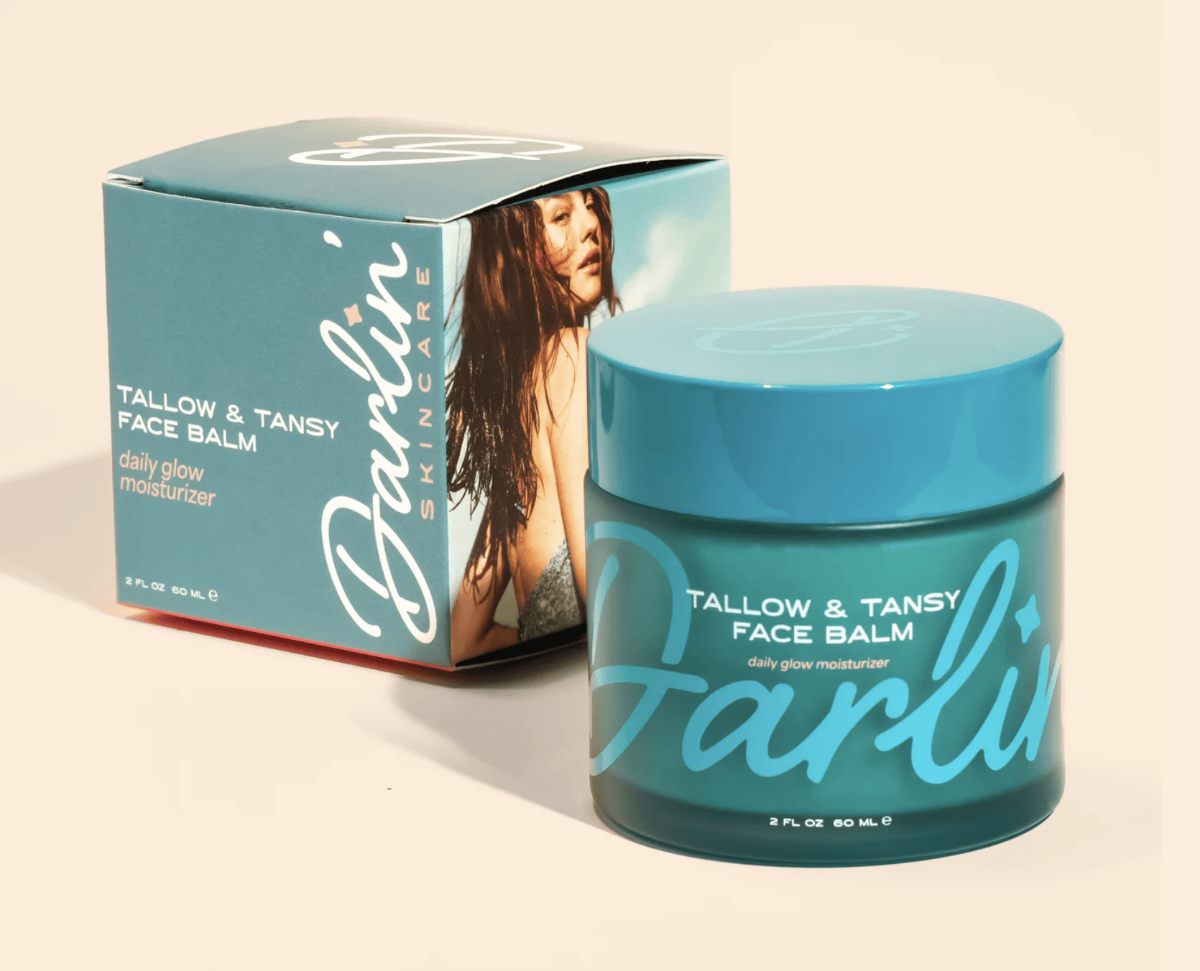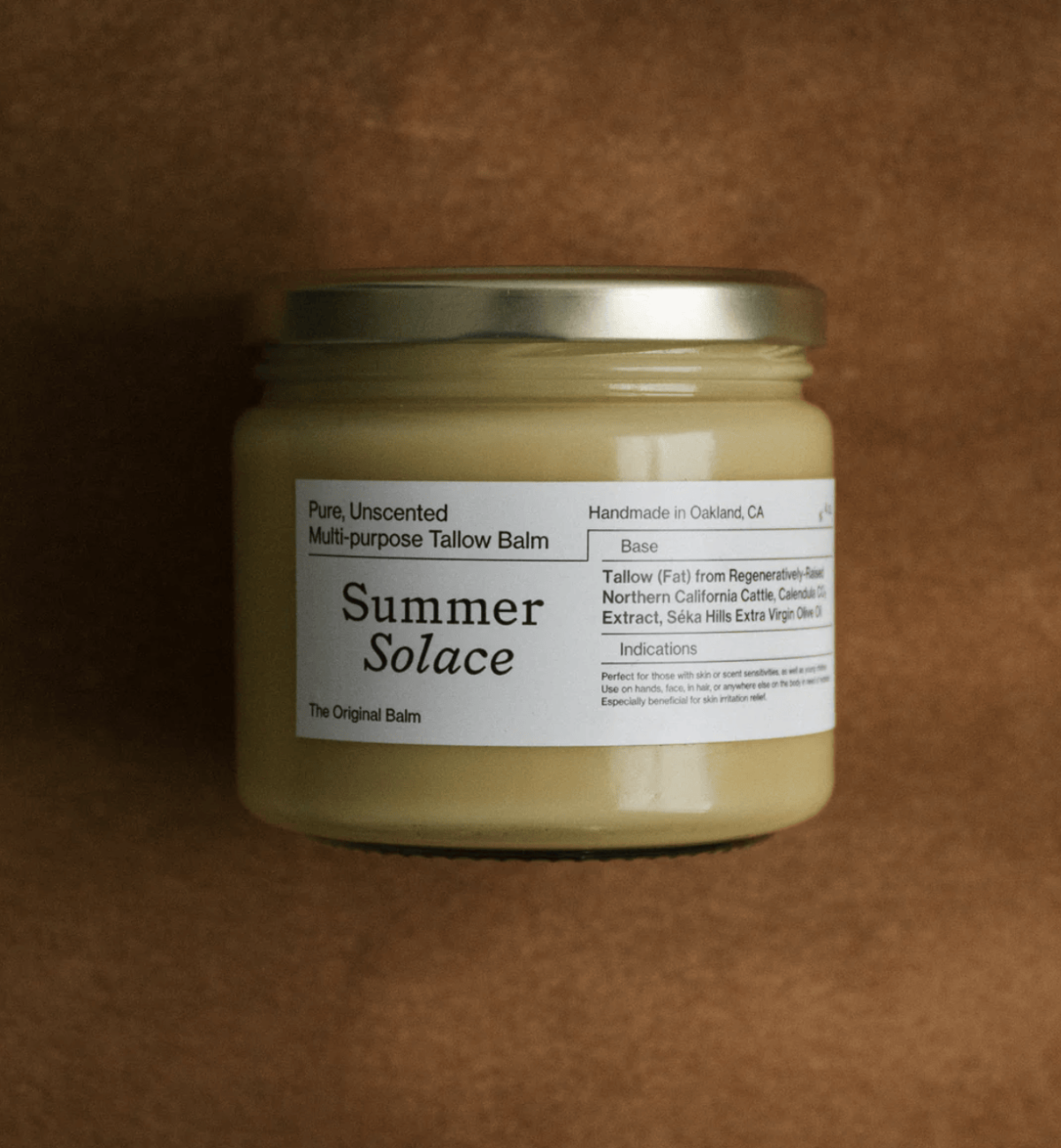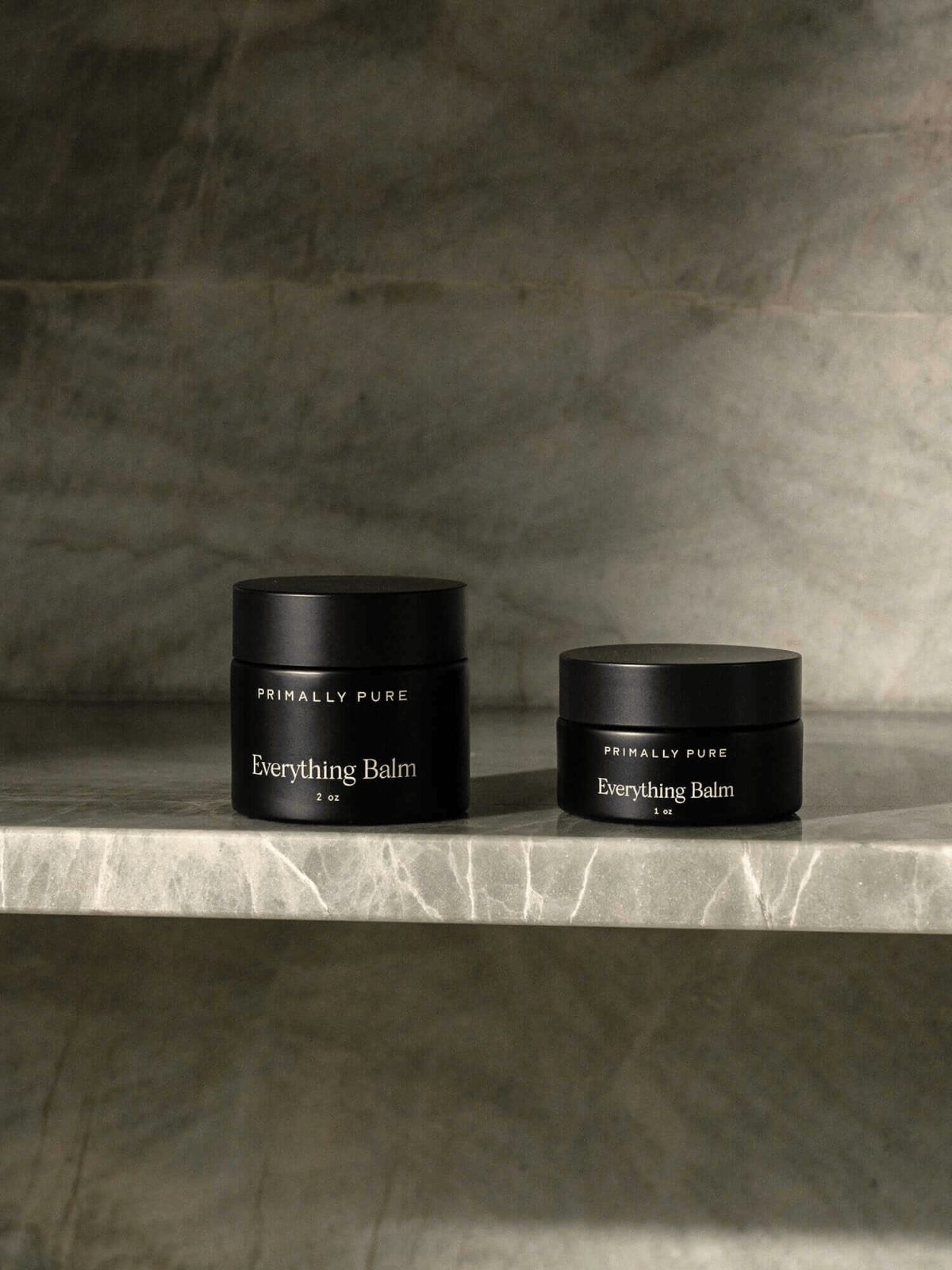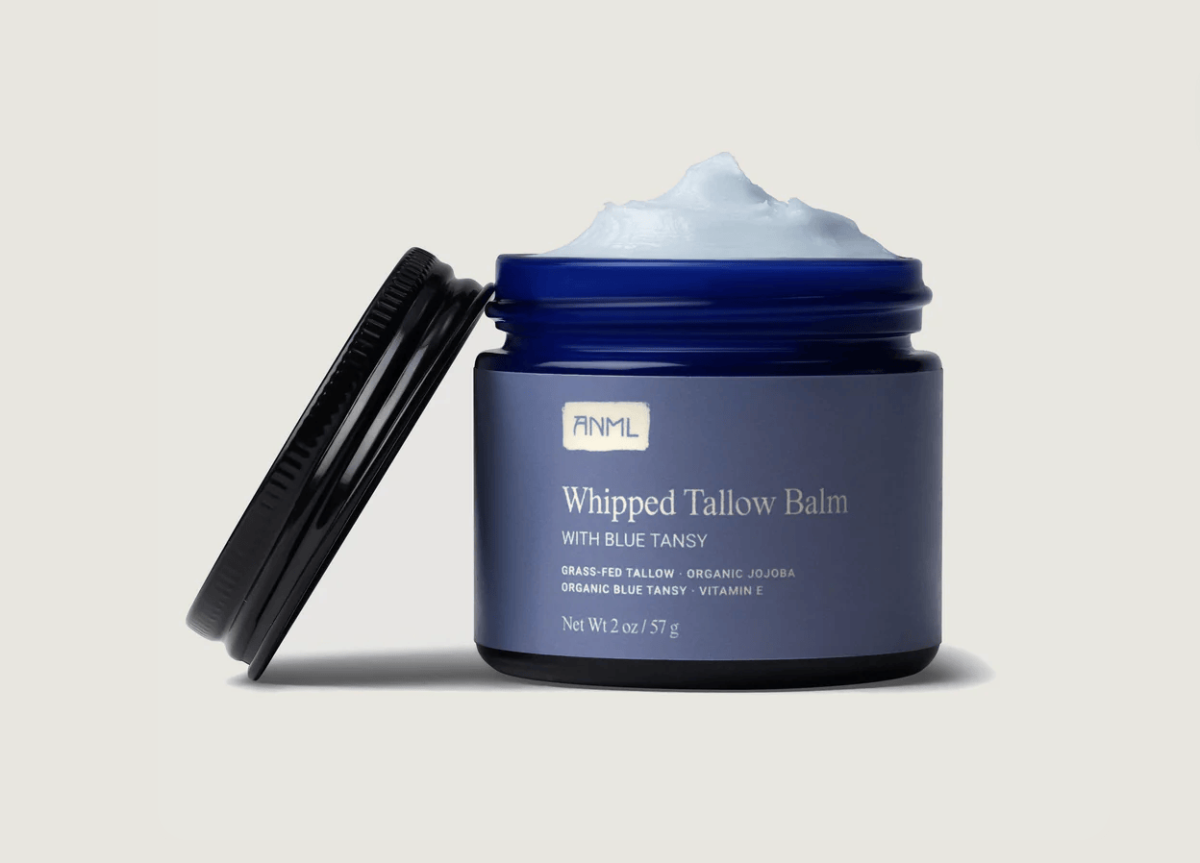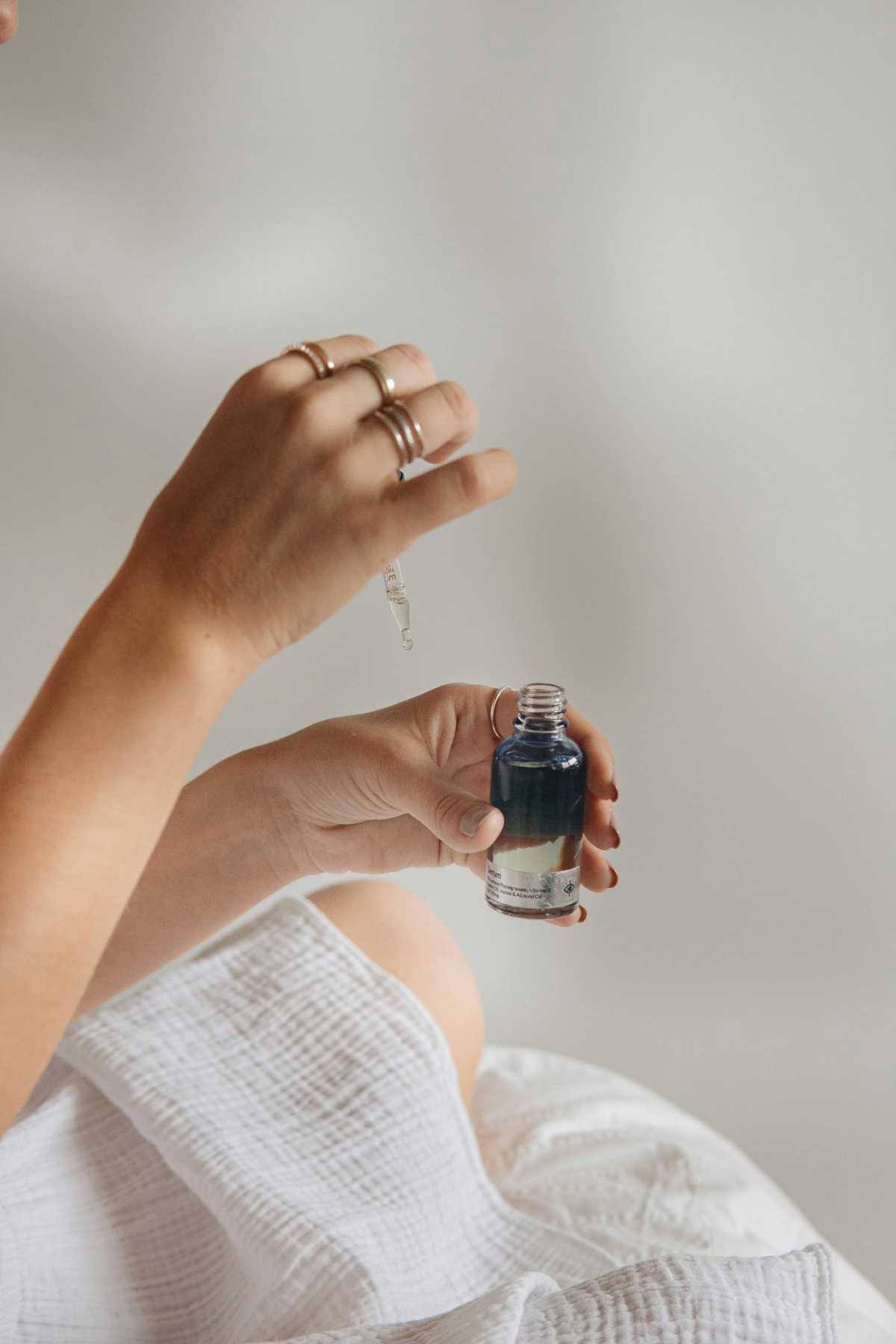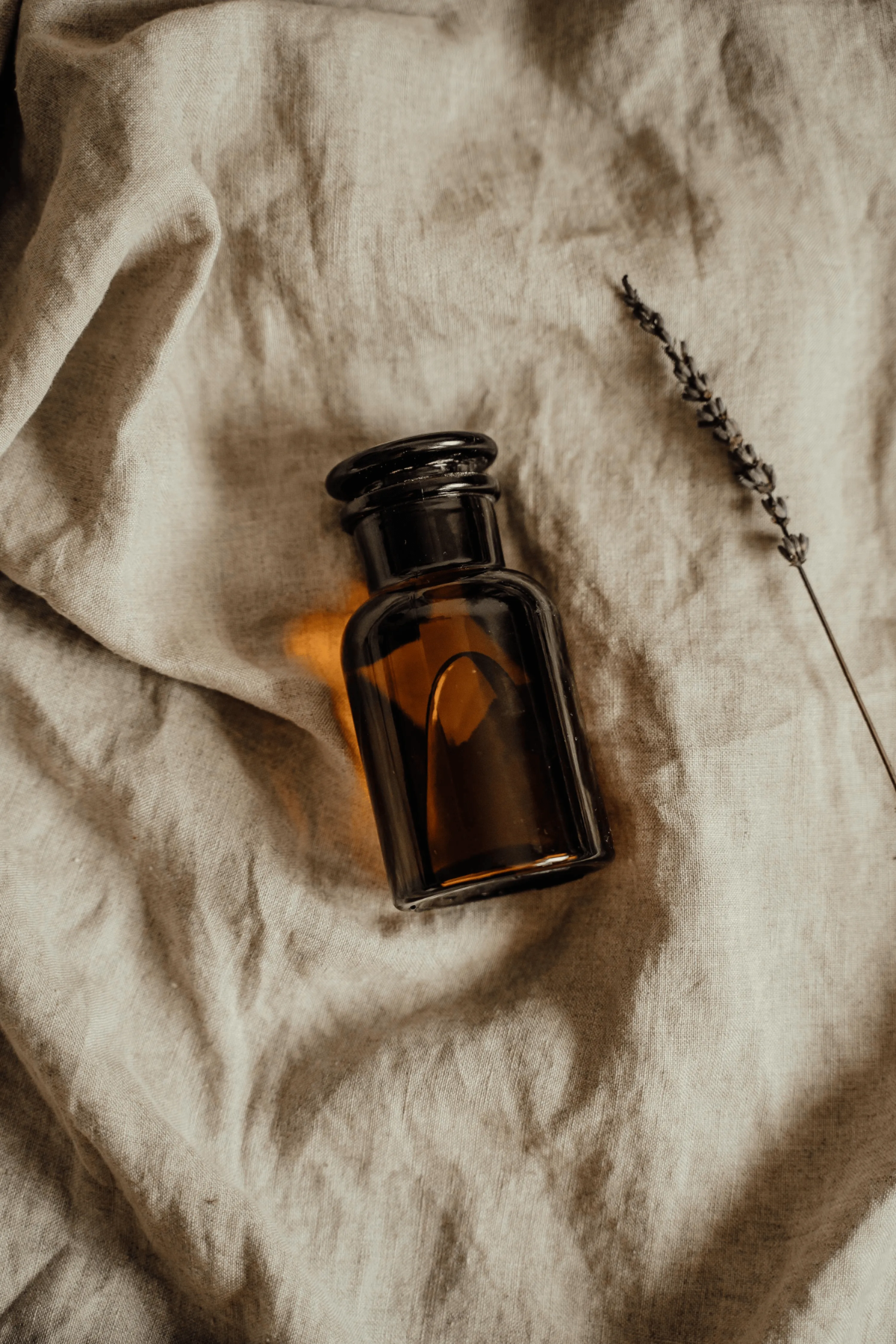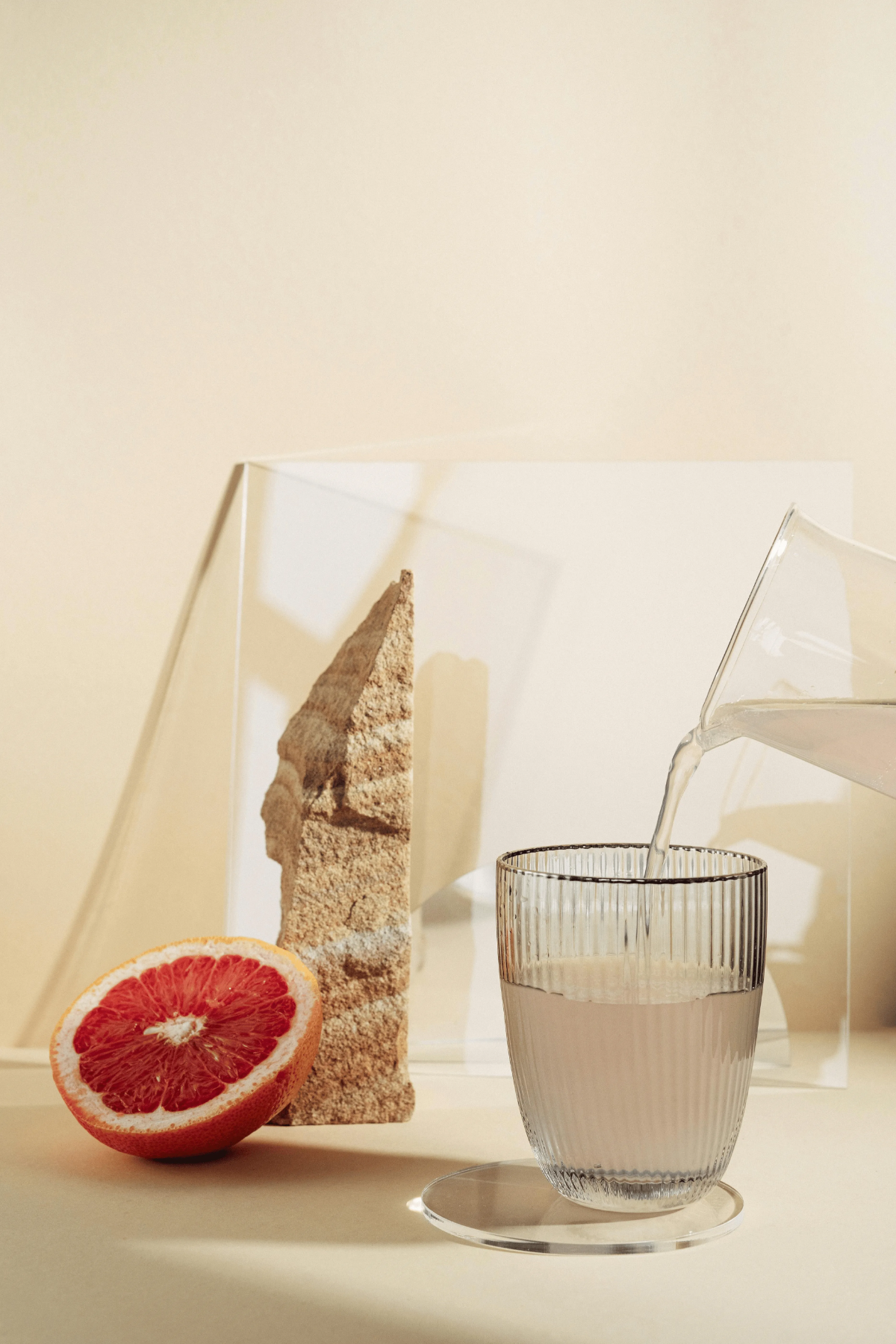Why Beef Tallow Face Cream Works for Skin
Last update October 30, 2025
A beef tallow face cream can support the skin barrier with fatty acids and vitamins. Learn benefits, risks, who should avoid it, and how to use it for hydrated, healthy skin.
A quiet renaissance is happening on bathroom shelves. Glass jars of beef tallow face cream, once relegated to homestead pantries, now sit alongside ceramide serums, essential oils, and cold-pressed seed oils in upscale boutiques. At first, the idea sounds rustic, even austere, yet grass-fed tallow mirrors the very lipids that fortify the human stratum corneum. Rich in fat-soluble vitamins A, D, E, and K, structured around bio-identical triglycerides, and naturally balanced in saturated and monounsaturated fatty acids, this time-honored skin care staple offers a minimalist, technically elegant answer to moisture loss, environmental stress, and winter flaking while quietly supporting skin regeneration.
Trends alone rarely justify a product shift, but ancestral beauty rituals paired with modern lipid chemistry create a compelling case. Dermatology journals now explore animal-derived stearic blends for barrier repair, while zero-waste advocates praise tallow for up-cycling nutrient-dense suet that might otherwise become biodiesel. As with all clean formulations that honor the skin’s natural rhythm, you can explore how tallow fits within the wider movement toward conscious skincare in our guide on natural products that support a radiant, toxin-free glow. In the sections that follow, you will learn what tallow is, why provenance matters, who should approach it with care, and how to fold an organic grass-fed tallow ritual into a contemporary routine without sacrificing pore clarity or sensory pleasure.
What You'll Discover
Affiliate Disclosure
Some links in this post are affiliate links. That means we may earn a small commission, at no additional cost to you, if you choose to make a purchase. These are always brands, stays, or experiences we would recommend to a dear friend. Thank you for supporting the quiet sustainability of Terra Selene.
What is Beef Tallow in Skincare
A Brief Historical Lens
Long before lab‑made lotions lined pharmacy shelves, people preserved their skin naturally with whatever local, shelf‑stable fat they could render. On the Eurasian steppe, nomads used yak or horse tallow applied topically onto wind‑scoured cheeks; Arctic Inuit softened sealskin boots, and their faces, with warm caribou grease; medieval Arab apothecaries scented lamb tallow with rose attar, selling the balm as a cure for desert dryness. Even in Victorian London, jars of “pomatum of mutton” sat on dressing tables beside ivory combs. Tallow was cheap, widely available, and extraordinarily multi‑purpose; one pot could season a cast‑iron pan, polish boots, and keep chapped knuckles supple.
Its fall from grace arrived only when the petrochemical industry offered colorless, odor-free mineral oil skincare products at a fraction of the cost, plus glossy marketing promises. Convenience won the 20th‑century consumer, and tallow cream retreated to rural kitchens and folk‑medicine cupboards.
Today, the pendulum is swinging back. Slow‑beauty enthusiasts value biodegradable, microplastic-free ingredients; zero‑waste advocates like that tallow upcycles a by‑product that would otherwise become low‑grade fuel; and ancestral‑health circles point to tallow’s bio‑compatibility with human sebum. Small farms now dry‑render suet under low heat, creating a nearly scent‑free butter that answers modern concerns about transparency, local sourcing, and ingredient lists you can pronounce. Quality matters. In short, tallow is resurging because it solves three contemporary pain points at once: sustainability, skin‑barrier health, and minimal processing.
Fatty‑acid Profile and Skin Barrier Synergy
The highest quality beef tallow is simply the pure fat that surrounds a cow’s kidneys. When it’s gently melted down, it turns into a creamy butter that softens at about 32 °C, almost the same temperature as your skin, so it melts in quickly instead of sitting on top.
That butter carries a balanced mix of skin-loving fats. Roughly one-third is oleic acid, which gives a silky glide, while about a quarter each of stearic and palmitic acids act as an effective moisturizer, sealing tiny cracks in the skin’s outer layer to keep moisture from slipping away. Smaller amounts of other fatty acids round out the profile.
Tallow also brings a helpful, if modest, bundle of vitamins. There’s a gentle dose of vitamin A to nudge fresh cells to the surface, a touch of vitamin D, and a small but useful dash of vitamin E, nature’s antioxidant shield. Together, these nutrients soothe irritation, fight everyday free-radical damage, and help oily skin balance its own oil production.
Cholesterol, Squalene and Minor Lipids
Think of tallow as more than just fat: it also carries tiny amounts of cholesterol (about half of one percent) and squalene, two lipids your own skin already makes to stay soft and flexible. When you blend grass‑fed tallow with natural ingredients such as jojoba or olive oil, you rebuild the full “mortar” that keeps the skin barrier strong. This matters after heavy exfoliation, retinoids, or icy wind: replacing the missing lipids calms tightness, stops moisture from leaking out, and restores that smooth, comfortable feel.
Rendered Beef Fat vs Grass‑fed Tallow
Not every jar labelled “tallow” is automatically skin‑friendly. Fat trimmed from feed‑lot cattle is usually boiled hard at temperatures above 150 °C, scorching fragile vitamins and leaving a faint stew aroma. Grass‑fed tallow gets gentler treatment: suet from pasture‑raised cows is melted slowly below 120 °C, strained twice through unbleached muslin, then sealed while warm so air can’t oxidize the nutrients. This slow method keeps the balm ivory, almost scent‑free, and rich in goodness. Grass‑finished suet also contains more of the calming ‘good’ fats (Omega‑3s) and less of the inflammatory ones (Omega‑6s). That friendlier balance can make the cream noticeably gentler on easily irritated skin. In short: choose grass‑fed, low‑heat rendered tallow and your face reaps a noticeably richer pool of skin‑loving lipids.
Beef Tallow Face Cream Benefits
Immediate Occlusion for Dry and Sensitive Skin
Think of tallow as a thermal blanket stitched from lipids your body already understands and will absolutely love. When you press a pea-sized swirl onto slightly damp skin, stearic and palmitic acids line up between corneocytes like bricks and mortar, slowing evaporation even in desert flight cabins or alpine winds. Laboratory comparisons show that animal-fat occlusives can cut transepidermal water loss almost as effectively as petrolatum, yet the finish feels breathable and satin, not waxy. After three consecutive nights, most users notice that dehydration lines from dry skin along the nose fold soften, and makeup sits smoother because micro-flaking has stopped.
Antioxidant Buffering and Redness Relief
Grass-fed tallow delivers modest but meaningful doses of vitamins A, D, and E plus conjugated linoleic acid (CLA). Together they form a quiet defense squad against reactive oxygen species set loose by UV rays, blue light, and urban pollution. Vitamin E mops up free radicals; vitamin A nudges fresh cells to the surface; CLA downshifts the inflammatory pathways that present as redness. In practice, that means skin types prone to rosacea flare or post-retinoid sting often look measurably calmer, think pink, not crimson, within a fortnight. Pair nightly tallow skincare with a mineral-rich mist, and you create an at-home “barrier facial” that requires zero spa booking.
Barrier Rescue for Mature Complexions
Collagen isn’t the only thing that dwindles after menopause; sebaceous output can fall by 40 percent, leaving skin thin, parchment‑dry, and vulnerable to fine fissures. The beef tallow face cream steps in like replacement mortar, filling lipid voids so the stratum corneum stays supple. Stearic‑rich triglycerides plump micro‑gaps while cholesterol and squalene restore flexibility. Within four to six weeks of nightly use, many mature reviewers report a softer “papery” texture transforming into a cushioned, velvety feel. Fine lines remain, but they are no longer highlighted by surface cracks, giving an overall impression of rested vitality rather than fatigued dryness.
Multi‑function Versatility
A single jar of tallow balm can replace half the products in a weekend dopp kit. Warm a lentil‑sized dot and glide it across cracked heels, chapped cuticles, sun‑scorched shoulders, or wind‑burnt surf cheeks; the balm liquefies on contact and re‑solidifies as a protective film. Travelers love decanting 5 g into a contact‑lens case, small enough to clear TSA, yet generous enough for five full‑face night masks. For minimalists, the same pot pulls triple duty as body moisturizer, after‑shave soothe, and rich lip balm that won’t melt into a pocket the way coconut oil does.
Makeup‑artist Texture and Finish
Because grass‑fed tallow melts at roughly 32 °C, just below skin temperature, a rice‑grain dab warmed between fingertips turns into a translucent veil that smooths dry patches without sabotaging foundation longevity. Professional artists use it backstage to revive models’ complexions after multiple cleanses, noting that it acts like a silicone‑free gripping primer: no pilling, no greasy slide, just a subtle “cashmere” glow. Bonus: unlike some seed butters, tallow doesn’t leave a high‑shine film, so strategic placement on cheekbones doubles as a cream highlighter for a naturally lit look.
Sourcing that Matters
Provenance shapes performance. Look for labels that specify clean ingredients, grass‑fed, grass‑finished cattle raised on regenerative pasture and never treated with routine antibiotics. Ask the maker if the rendering was done dry, below 120 °C, and whether the balm was jarred under inert gas to limit oxidation. Small‑batch artisans often release seasonal stock amounts, stamping pour dates and batch numbers on each lid. While supermarket tallow may cost less, a pasture-raised version offers a cleaner fatty-acid profile, a gentler aroma, and a supply chain that pumps money back into soil-health-driven farms, one more reason to explore how conscious ingredient sourcing defines truly clean skincare.
How to Use a Tallow Moisturizer
As part of your natural skincare routine, begin each night with a lukewarm cleanse that leaves the skin slightly dewy, not squeaky. Sweep a mineral‑rich mist or an aloe‑based essence across the face; water in the top layer helps the balm glide. Scoop a pea‑sized curl of whipped tallow and warm it between fingertips until the butter turns clear. Press, never rub, across cheeks, chin, forehead, and down the neck. If you sleep on cotton, consider a silk pillowcase; reduced friction lets lipids settle undisturbed.
In daylight hours, temper the richness by blending the same pea‑sized amount with an equal drop of sweet almond oil or jojoba oil in your palm. The mix liquefies at once, vanishing into skin and leaving only a soft‑focus glow, a perfect base beneath mineral sunscreen or sheer foundation.
Layer tallow as the final step in your active routine. Water‑based serums such as niacinamide or peptides should go first; give retinals a ten‑minute head start so their tiny molecules can travel before you seal them in. Keep potent exfoliating acids for non‑tallow nights; trapping them too quickly can amplify irritation.
Leftover balm on the palms becomes instant body care: glide it along damp shins, scrunch through split ends, or massage into cuticles before slipping on cotton gloves for an overnight deep treatment.
Ingredients List, Best Practices and Safe Storage
The most nourishing tallow balms read like the mise‑en‑place of a slow kitchen, concise, recognizable, and intentional. A standout jar begins with at least 70 % organic, grass‑fed beef tallow: this is the structural fat that delivers the lipid profile so close to our own sebum. Next comes a cold‑pressed carrier oil (jojoba if you crave a velvet‑matte finish; olive if you prefer a Mediterranean weight; rosehip if you want an extra hit of trans‑retinoic acid). These oils “bend” the balm’s melting point, ensuring it liquefies instantly on contact and leaves no waxy drag. A spoon‑tip of unrefined beeswax follows, just enough to loft air into the whip and keep it from separating during humid summers.
Artisanal formulators often weave in therapeutic CO₂ extracts, blue chamomile to hush post‑exfoliation sting, calendula for barrier repair, or frankincense for its gentle astringency. Because CO₂ extraction uses low temperatures and no solvents, the actives arrive intact, lending herbaceous nuance without synthetic perfume. Vitamin‑rich extras like sea‑buckthorn pulp oil or pomegranate sterols can round out the fatty‑acid spectrum, but they belong in drizzles, not floods, so the tallow remains hero.
Red‑flag additions tell a different story. Mineral oil or paraffin dilutes nutrient density and leaves a vinyl slick that negates tallow’s breathable charm. Phenoxyethanol beyond one percent may push sensitive skin into rebellion; if preservation is needed, gentler food‑grade lactobacillus ferments accomplish the task without sting. And anywhere you see “polyethylene” or “polyacrylamide,” know that microplastics are sneaking into what should be a biodegradable ritual. Finally, a generic “parfum” can mask dozens of undisclosed allergens; your nose and your nerves deserve transparency.
Treat your tallow balm as you would a fine artisanal butter. Keep it under 25 °C; a linen‑lined drawer or shaded bathroom shelf mimics the cool larders of older farmhouses. Should a heatwave liquefy the whip, rest the jar in the fridge for fifteen to twenty minutes, then stir gently with a clean chopstick, the emulsion will re‑aerate and set silky once more. Always lift the product with a stainless or birch spatula. Water droplets introduced by fingertips invite bacteria; metal or wood stays inert and easy to sanitise. If you must use fingers in a pinch, make sure they are freshly washed and thoroughly dried.
Fresh tallow smells faintly of warm parchment. Should the scent turn into old cooking oil or the color darken toward ivory‑yellow, oxidation has begun; time to relegate that jar to elbow and heel duty and open a new pot for the face. Decant a teaspoon of balm into a contact‑lens case for carry‑on flights or alpine backpacks. Solid at room temperature, it will not violate liquid allowances and thaws smoothly when warmed between palms après‑ski. Empty jars wash clean with hot water and castile soap; toss them in the glass‑recycling bin or repurpose as spice pinch pots.
Frequently Asked Questions
Is it truly good for the face?
Yes. When the tallow is grass‑fed and rendered below 120 °C, its stearic‑rich lipids knit neatly into the epidermal barrier, reducing flake and tightening the water seal of your skin. Press a pea‑size amount onto damp skin for the best uptake.
Will it clog MY pores?
On the five‑point comedogenic index, tallow-based products sit at two. Translation: lighter than coconut oil, heavier than squalane. If you are acne‑prone, start with a test patch along the jaw for seven nights. If pores stay calm, graduate to full‑face use.
Can it replace retinol?
No. Tallow is a comforter, not a cell‑turnover driver. Pair it after your retinal serum; its occlusive layer cushions peeling and amplifies glow without adding irritation.
Does it smell like Sunday roast?
Quality balm whispers of clean parchment or barely toasted oats. A meaty or tallow candle scent signals high‑heat rendering or inadequate filtration, best kept for leather boots, not facial skin.
Is it sustainable?
Absolutely. It rescues suet, often classed as “waste” in commercial butchery, and channels it into long‑use natural skincare products, sparing soy or palm plantations and returning revenue to regenerative farms. The balm biodegrades fully, leaving no microplastic trail in waterways.
How long does it last?
When tallow products are unopened and stored cool, up to twenty‑four months. Once opened, aim to enjoy it within nine months; the nose knows, if oxidation sets in, you’ll smell “old frying oil.”
Can I make it at home?
You can, provided you source grass‑fed suet, render it low and slow (below 120 °C), and filter three times through cheesecloth. However, small‑batch artisans already do this under cosmetic‑grade sanitation, sparing your kitchen the lingering scent.
Is it cruelty‑free?
Ethically sourced tallow up‑cycles an existing animal by‑product. No additional slaughter occurs for skincare alone. Seek farms certified for humane handling and regenerative grazing to align balm and conscience.
How does it compare to lanolin?
Lanolin excels at water‑in‑oil emulsification but can provoke contact dermatitis in sensitive users. Tallow’s fatty‑acid profile is closer to human sebum and is generally better tolerated, though lanolin remains unrivaled for nipple balms in breastfeeding.
Carry Tallow Home
From Bronze‑Age hearths to contemporary bathroom counters, rendered fat has shielded skin against wind, salt, sand, and time. A jar of beef tallow face cream is not a nostalgic novelty; it is a sustainable, elemental answer to over‑engineered moisturizers, one whose journey honors soil, whose chemistry honors the body, and whose ritual honors the mindful pause that self‑care should be. Select grass‑fed, low‑heat rendered balm, patch‑test wisely, and listen as your complexion exhales, restored, nourished, quietly luminous.

